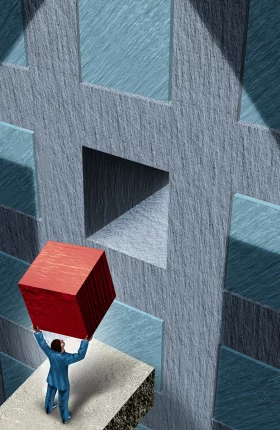By Nicholas Clark
For many energy retailers, customer service is a constant compromise between customer experience and operational costs. Attempts to provide a positive customer experience while not breaking the bank often result in rising numbers of complaints, customer churn, demoralized employees, and ultimately higher costs.
Inspired by tech companies, some start-up energy retailers are addressing these challenges. Enter Octopus Energy. Founded in 2015 in the UK by a group of tech entrepreneurs and energy industry professionals, the green-energy supplier has developed a unique customer service operating model that provides differentiated experiences for customers and fulfilling roles for employees—all at lower costs.
In just five years, Octopus has earned multiple industry awards for customer experience as well as its share of five-star online reviews. This enthusiasm has helped the company grow its customer base from around 200,000 to more than 1.5 million. Octopus’s cost to serve per customer is the lowest in the UK and 50% less than the average of the top eight competitors in the UK market. The company recently became a “unicorn,” a start-up valued at $1 billion or more, thanks to a strategic investment from Australia-based Origin Energy. Octopus plans to use this investment to power its global clean-energy expansion.
To learn more about the Octopus operating model, we recently spoke with Director of Operations Jon Paull, who led the initiative to develop it.
You spent 15 years at other start-up energy retailers before joining Octopus. What are the key customer service challenges that companies struggle with today?
There are several problems with the approach energy retailers have traditionally used for customer service. It’s hard for customers to find a representative who can help because of the way the system is set up. Customers often have to navigate a complex interactive voice response that lands them in the wrong department. And even if they land in the right department, customers almost never get to speak to the same representative twice, which is frustrating.
It’s also tough for the reps. They don’t have any ownership or incentive to resolve the problem, so they often end up passing a problem off to another agent. In addition, they often have to follow certain processes to the letter—which means they can’t look for creative ways to solve problems or enhance the customer experience. Many reps end up leaving because they don’t find the work fulfilling and don’t have the opportunity to build their skill sets.
So the traditional approach is less than ideal for customers and the team, and it’s costly for the company as well.
What’s innovative about Octopus Energy’s customer service model? How does it address these issues?
Our customer service model is set up to provide an outrageously good, easier customer experience while creating an enjoyable workplace for our team.
At Octopus Energy, customer service is provided by our universal energy specialists—who are organized into teams of ten or so. Each team looks after approximately 60,000 customers. If a customer has to contact customer service more than once, there’s a near-100% chance they’ll be interacting with someone on the same team as before and a one in ten chance it’ll be the same representative as before. Compare this with a traditional contact center, where a customer may be routed to one of thousands of representatives and has no chance of speaking to the same person twice.
Our model also gives teams a high level of autonomy for serving their customers. As a result, people on the same team are more inclined to work together to resolve complex issues instead of handing problems over the wall to someone else. They are keen to keep improving processes and technologies as well. Rather than having standardized processes and procedures, which people often hide behind and which lead to poor customer outcomes, we give teams the autonomy and scope to challenge and decide how they do things. This keeps the work interesting while allowing the business to innovate and move at pace.
Team managers also have a lot of autonomy. We like to say they are treated like the CEO of a mini-business with revenues of £60 million. Like CEOs, team managers don’t micromanage their teams the way a traditional contact center supervisor would. Instead, they focus their efforts on motivating their team and growing their business.
The way we treat career advancement is also innovative. The traditional service business puts people on the phones first, then moves them to the back office when they get more advanced. But we think it should be the other way around. At Octopus, the role of a specialist starts out as fairly simple—but can grow over time as people gravitate toward the tasks they especially enjoy. People keep the same roles, though, so that there aren’t 15 people applying for a promotion that leaves 14 people disappointed. We find space for people to contribute as long as they have the right skills and attitude. We like to imagine how they talk about their job at the family Christmas dinner.
Importantly, people don’t define themselves or success in the organization by their job title or an arbitrary performance scorecard but by doing amazing things.
Our people really enjoy their work—Glassdoor reviews rate Octopus Energy higher than 4.8 out of 5. There’s no overtime or fixed schedules, but it’s not unusual for people to stay until 6:30 or 7:00 every night. They stay late because they genuinely feel and operate as business owners and they know flexibility goes both ways. The attrition rate is less than 10% annually, which is significantly below benchmarks for traditional contact centers. To me, this is the most important metric. As long as people love coming to work every day, I know I’m doing my job right.
What’s different about Octopus’s approach to technology?
Octopus Energy’s founders knew from the outset that technology is often a major constraint to delivering a great customer experience. So we built our own integrated billing and customer relationship management system. The system, which is called Kraken, has some distinct advantages over other systems. It’s easier to navigate because it looks and feels more like a modern e-commerce platform and holds everything within one ecosystem and database. That means that everything, from calls to social media to bills and customer interactions, are all located in one system. As a result, customers can use the intuitive self-service features to fix small problems. Many other issues are quickly fixed or may not even occur because of automation. All of this helps reduce our staffing needs.
More and more traditional energy retailers are learning about the advantages of Kraken and are partnering with us to get access to this innovative technology.
But what’s worth emphasizing here is how IT teams interact with customer teams. An IT expert will sit with an energy specialist to observe their interactions with customers in real-time. So tech teams feel the pain of the operations teams when the technology isn’t working as it should. With that first-hand knowledge, IT can propose a quick solution instead of building something that’s over-engineered.
Octopus has grown a great deal in a short time, both organically and inorganically. How are you dealing with the challenges of scaling the new operational model?
The way we hire and develop our people has been key to our scaling efforts. When I was developing the service model, I focused on recruiting superstars who understood it and could build on it as well as take care of customers. Instead of looking for more traditional customer service skills, I looked for recent geography and earth science graduates who wanted to work for a green-energy start-up.
These new recruits were thrilled to have a chance to create a business from scratch fresh out of university, and almost all of them are still working at Octopus today.
As we scaled, we broadened the pool to include people with a more traditional customer service background. We found an innovative way to blend new employees into teams. As a team gets better and better at working together, it can handle more and more customers. Once the number reaches 70,000 or so, the team splits in two. A senior member of the team is promoted to manage the second team, and new hires are brought in to bring each team back up to ten people. This approach ensures that there’s always a healthy mix of new and experienced people in each team, which helps new people get up to speed. By giving individual teams the chance to grow, we can maintain an ongoing start-up vibe. And it incentivizes teams to increase the number of customers they’re serving.
Acquisitions present different kinds of challenges. You want to retain the expertise of the customer service representatives who were already serving these customers, but you also want the new employees to adapt the Octopus approach. Even though people are conditioned to work in a certain way, when they see how much better our approach is, they like it. It’s not hard to make the leap from something that’s tedious to something that’s fun.
People get hung up on “culture change.” It’s okay for some of the cultures to be different, but there are some non-negotiables, such as delivering outrageously good service to customers and maintaining our collaborative, multi-skilled teams.
We’re not concerned about brand consistency across different offices. What’s more important is tone of voice—it should reflect the personality of the individual, not brand guidelines. We tell our reps to write emails as though they are writing to a friend.
How has the leadership team been navigating the challenges brought about by the COVID-19 pandemic?
We’ve made leadership very customer focused—our No. 1 aspiration is for leaders to be servant-led, with the company built around operations rather than the executive team. We think team first, customers second, and company third. This seems counterintuitive, but I’m convinced we offer a better experience for our customers by looking after the people who look after them. What people don’t realize is that team leaders here run a business that is bigger than 50 energy suppliers in the UK. Yet our top leadership group is actually very small: the CEO, CFO, CTO, marketing director, customer experience director, and I cover operations. We each keep on top of feedback from customers and colleagues so that we have a strong shared view of priorities. Our role is to make sure people feel valued and ensure everyone loves coming to work every day.
As a result, we were able to mobilize quickly when lockdowns began. Our technology and ways of working enabled us to move to a work-from-home model in just one day, and our response times actually improved! Because my team leaders were on top of the process, I had the space to think about how to engage with and motivate employees who were working remotely. For example, we responded to childcare challenges by setting up our own OctoKids program, with activity packs and a YouTube playlist. This was so successful that we have made the materials available to everyone on our website. This experience has taught us new ways to collaborate remotely, so teams will have more flexibility on where they work in the future.
What does the future look like for Octopus?
It’s hard to imagine the future but also very exciting. Originally, we planned to have 500,000 UK customers by the end of 2020, and we achieved that in early 2019. The next step is to take this UK success story to other countries to drive the global energy revolution. Last year, we acquired 4hundred, a green-energy supplier in Germany, and will move that onto Kraken soon. Expansion into more countries will follow.
We are now also forming partnerships with E.On and Origin Energy. In both cases, we’re setting up a “build-operate-transfer” project where they will migrate their customer bases onto the Kraken platform and our customer service operating model. These moves will provide a platform for making a “big green dent” in the universe, which would be very exciting for our team. It felt like a pipe dream a few years ago, but it’s now an exciting reality!
But this is only the beginning of the green-energy revolution. We will work hard and look for more partners to accelerate the transformation toward a clean-energy future.
To learn how BCG can support customer centricity in energy retail, please contact one of the following experts:







